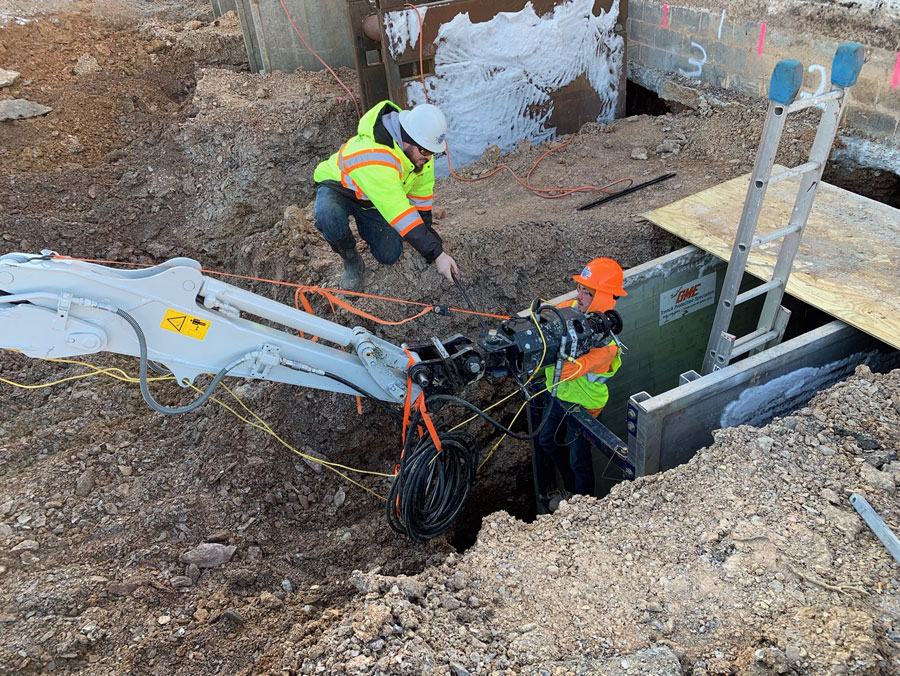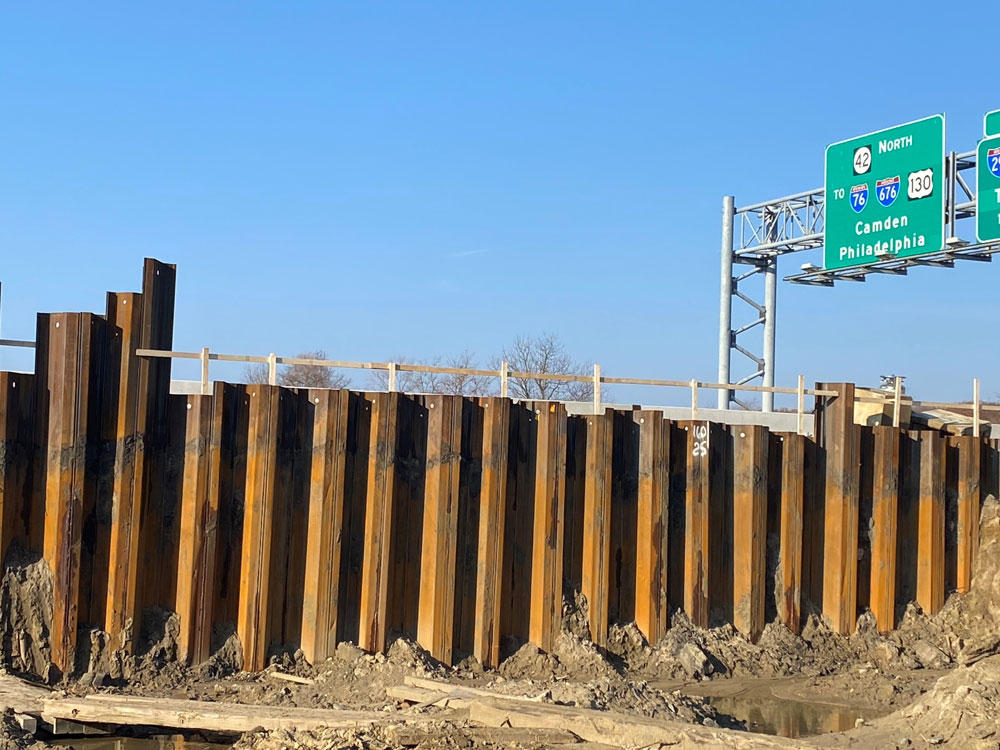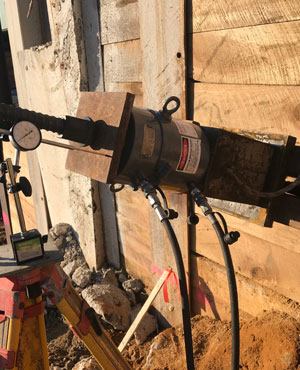The concept of using helicals as temporary tiebacks in support of various projects came up recently. In these projects, helicals are not the star of the show, but rather “the best supporting actor.” This supporting role speaks to the versatility and flexibility of helicals, allowing projects to proceed by eliminating or mitigating key issues.
Several years ago, Michael D’Angelo of D’Angelo Brothers, Danbro’s sister company, addressed the subject in a brief, but comprehensive, article. I couldn’t improve on the detailed experience of a Civil Engineer who has specified helicals as temporary tiebacks. Michael’s article, quoted in full here, is followed by a few case studies illustrating the rationale for helical anchors for temporary support in a variety of situations.
 “As a contractor engaged in the design and construction of excavation support systems, we have used Helical Anchors as temporary tiebacks on several projects. We have experience with several different kinds of anchors: pressure grouted anchors, rock anchors, regrout able anchors, gravity grouted anchors, etc.”
“As a contractor engaged in the design and construction of excavation support systems, we have used Helical Anchors as temporary tiebacks on several projects. We have experience with several different kinds of anchors: pressure grouted anchors, rock anchors, regrout able anchors, gravity grouted anchors, etc.”
“Some of the advantages of using Helical Anchors as temporary tiebacks when compared to grouted anchors are low mobilization costs, low installation costs, speed & ease of testing and common equipment usage. Mobilization for Helical Anchors requires a backhoe with a drill motor and the material itself; the leads and extensions to be installed. This material and equipment can be mobilized on a pick-up truck with tag-a-long trailer. Mobilization for grouted anchors requires a drill, a compressor, a grout mixer, and a pump along with water hoses, grout hoses, tooling, etc. Installation of Helical Anchors usually requires a crew of approximately 3-4 men, whereas grouted anchors usually require a crew of approximately 4-5 men. In addition, installation production is typically much greater with Helical Anchors than with grouted anchors.”
“Another unique advantage of Helical Anchors is the “common equipment usage.” Helical Anchors are typically installed with a backhoe with a portable drill motor. Like a hydraulic hammer, this drill motor can be easily mounted and quickly removed when necessary. For an excavation contractor as well as an excavation support system contractor, this is an important advantage. When we are not installing Helical Anchors, we can remove the drill motor, install a bucket on the backhoe, and use it productively for other tasks on the project. Typically, this is not possible with drills used to install grouted anchors as they only perform the function of drilling. The “common equipment usage” is a great advantage.”
Brief Resume of Michael F. D’Angelo, P.E.
Michael F. D’Angelo, P.E. is the President and Chief Estimator at D’Angelo Bros., Inc. He is a Registered Professional Engineer in the State of Pennsylvania and has over 30 years of experience in the design and construction of excavation support systems, underpinning, tiebacks, permanent tiedown anchors, micropiles and soil nailing. He is responsible for all of the estimating, engineering and construction for all of D’Angelo Bros., Inc.’s work involving excavation support systems, underpinning, tiebacks, permanent tiedown anchors, micropiles and soil nailing. He is a 1988 graduate of Lafayette College and holds a Bachelor of Science Degree in Civil Engineering.
 Following are several case studies illustrating instances or situations where temporary helical tiebacks were used to enable projects to move forward to completion.
Following are several case studies illustrating instances or situations where temporary helical tiebacks were used to enable projects to move forward to completion.
Excavation Support :
Click here to read Case History on Residential Tiebacks.
Click here to read Case History on Commercial Tiebacks.
Click here to read Case History on Commercial Tiebacks.
Highways & Transportation:
Click here to read Case History on Highway Interchanges Delaware.
Click here to read Case History on Direct Connect Project New Jersey.
Click here to read Case History on Garden State Parkway Expansion New Jersey.
Railways & Infrastructure:
Click here to read Case History on SEPTA Philadelphia PA.
Click here to read Case History on Bridge Repair Syracuse NY.




